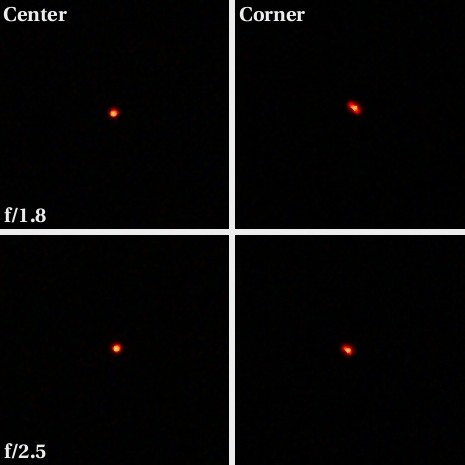Sony DT 50 mm f/1.8 SAM
7. Coma and astigmatism
Please Support UsIf you enjoy our reviews and articles, and you want us to continue our work please, support our website by donating through PayPal. The funds are going to be used for paying our editorial team, renting servers, and equipping our testing studio; only that way we will be able to continue providing you interesting content for free. |
- - - - - - - - - - - - - - - - - - - - - - - - - - - - - - - - - - - - - - - - - - - - - - - -
Lenses of 50mm focal length and aperture of around f/1.8 usually have lots of problems with coma. Nikkor showed relatively large level of this aberration, Canon a bit smaller, but also easily noticed. Sony startles us here. Coma does deform the diode picture, but the deformation is not strong and not striking. Without a doubt Sony comes off better than its competitors here.

We were really curious how astigmatism looks. This off-axis aberration is very responsive to plastic in the body. That plastic often causes inappropriate inclination of optical elements to the lens optical axis. These inclinations “nourish” astigmatism, which “explodes” to serious sizes. Let’s remind ourselves that with Nikkor it totaled 17%. Sony comes off better here, registering the result of 13%. You can be pretty sure, though, that with time, once the plastic body starts to wear down, the situation will deteriorate.






